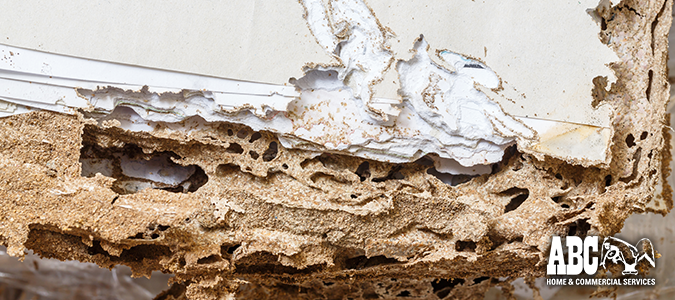No insect strikes more fear into the heart of homeowners than termites. Termites cause billions of dollars’ worth of damage every year and single infestations can number in the millions.
It’s estimated that there are fifteen hundred pounds of termites for every human being on the planet! Needless to say, they are a formidable force.
As we head into spring, termites are preparing to find mates and start new colonies. March and April are the termites’ mating period, also known as swarm season.
March 12-18th is Termite Awareness Week, making it the perfect time to complete this termite inspection checklist around the home.
Termite Awareness Week
The Professional Pest Management Alliance (PPMA) created Termite Awareness Week for the second week of March. This year, Termite Awareness Month falls on March 12-18. Follow the hashtag #TermiteWeek for more information.
Do I Have Termites?
Termites do not like to make themselves known. They rarely stray from their soil, mud tubes or food sources where they are tunneling. Usually, when a homeowner notices a termite problem, it’s in the form of wood damage, mud tubes, or swarming adults.
Termite Warning Signs
- Swarming termites
- Mud tubes (small tunnel-like structures made of soil and wood, found around termite nests, wood structures, and concrete/stone foundations)
- Evidence of termite-feeding activity
The farther away you are from the termite colony, the less likely you are to find evidence of their presence. Still, mating pairs of termites do leave behind clues.
One clue that you have termites is if you see small, translucent wings around the home, such as in spider webs, around window sills, or any areas where you may have had termites in the past.
Learn how to spot early signs of termites so you can treat the problem before it starts spreading.
Termite Inspection Checklist — How to Inspect Your Home for Termites
In order to know if you have termites or not, it’s a good idea to take a proactive approach. Check the following locations with a pointed tool in hand, such as an ice pick or fire poker.
- Inspect the perimeter of your home for signs of wood damage. Probe the area with a flathead screwdriver or similar poking instrument.
- Be on the lookout for signs of moisture, drainage problems, damaged wood, and termite tunnels, wings or fecal pellets.
- Look for any kind of mud tubing (either connecting soil to wood or wood back to soil).
- Fix cracks in concrete foundations.
- Any wooden support posts should be set in concrete.
- Soil should be at least 8 inches below any porches, decks or wooden structures.
- Repair any plumbing leaks as soon as possible.
- Get rid of wood piles and other debris under and around the house.
- Avoid plants and flowerpots right next to the house.
- Porch steps should not rest on the ground.
- Avoid trellises that touch the soil and the house.
- Schedule annual plumbing and HVAC maintenance inspections.
If you notice any cracks in the foundation, moisture problems or anything else that can send a welcome signal to termites, get them fixed as soon as possible.
One way to prevent a termite problem from developing around your home or business is to hire a professional pest management inspection at least once a year.
A professional will be able to conduct a full inspection and tell you what kind of pest problems you have and what to do about them.
The Texas Termite: Formosan Subterranean Termite (Coptotermes formosanus)
There is one particular species of termite that Texas homeowners should be aware of.
The most common type of subterranean termites in the Texas area are Formosan Termites. Formosan termites are yellowish-brown and about ½ inch long. A lot of small hairs cover their otherwise transparent wings.
Formosan termites tend to enter the home via wood that is in contact with the soil. They travel from ground to wood via protective mud tubes. Unsealed cracks and gaps in the foundation provide easy entrances into homes.
Subterranean termites tend to find wood in your home through moisture in the wood or the surrounding soil; however, aerial colonies can also infest roofs and other spots that are above the foundation.
Formosan termites are a particularly menacing given their numbers. While they may not be able to consume wood any faster than the other subterranean species, they are more destructive because their colony is typically much larger. Formosan termites can number in the millions and are extremely hard to remove without help from a professional pest management company.
A Formosan colony can quickly grow into the hundreds of thousands and even millions, quickly causing extensive property damage.
Time is of the Essence
Timing is essential when it comes to termites. Contact a professional pest management company as soon as you notice any signs of termite activity in your home. Many possible methods are available to you, and a Pest Management Professional will be able to assist you in making the best decision.
This is not the time for a DIY approach! Termites are a serious problem that require specialized equipment and professional service.
Different treatment methods are used for different termite species. A Pest Management Professional will be able to positively identify your pest problem and offer green and reduced-impact treatments and strategies.
Terrorized by termites? Contact ABC Home & Commercial today to learn more about our reduced-impact termite control services.

